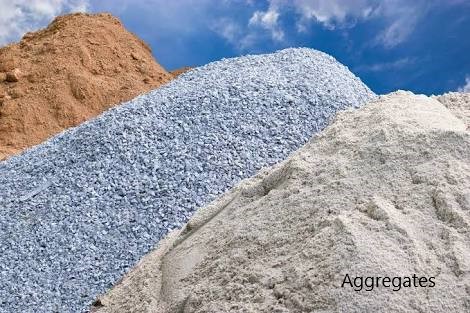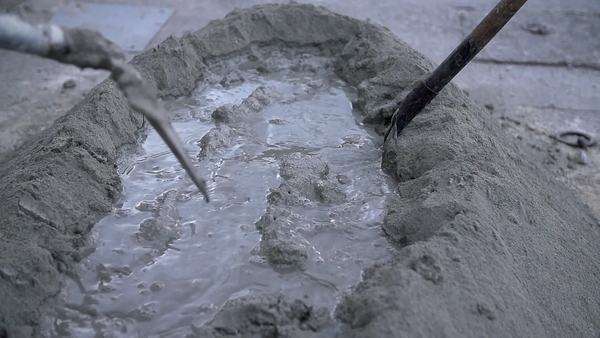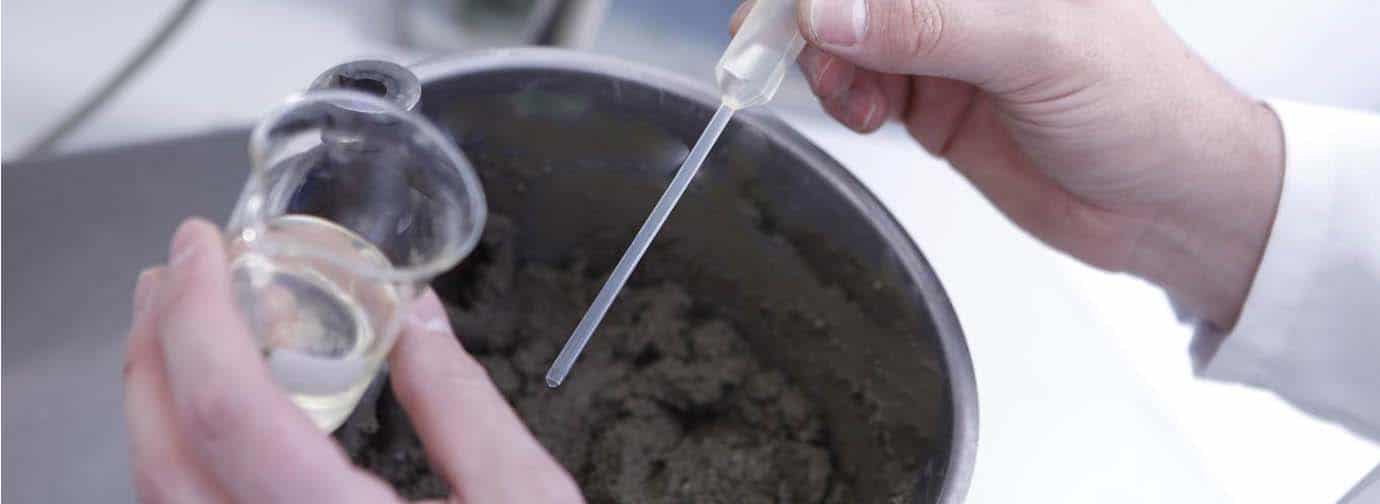Factors Affecting Concrete Mix Design
Factors affecting concrete mix design are needed to be aware by the structural engineers and the construction engineers to make the correct decision.
Generally, the concrete mix designs are related to the construction, and the approval process is also connected with the site team. Therefore, not only the design team but also the construction should be aware of the factors affecting concrete mix design.
Let’s see what is concrete mix design…
What is Concrete Mix Design?
Concrete mix design is the indication of concrete mix propositions including the type of admixtures used, concrete slump, etc.
It provides a clear indication of which amount to be used for each type of material.
Let’s discuss the factors affecting the concrete mix design process.
Factors Affecting Concrete Mix Design
Let’s discuss each factor to be considered in the concrete mix design in detail.
Here, we are discussing the material such as cement, water, aggregates, admixtures, etc for the concrete.
Compressive Strength
It is also called the concrete grade.
We use the concrete with specified compressive strength for construction. Generally, the compressive strength of concrete or characteristic strength of concrete is specified by the designer.
We make sure the concrete mix is having the specified compressive strength. Once the concrete mix design is submitted by the contractor, we check the mix proportions.
If they are acceptable, we proceed with the trial mixtures. On this occasion, we check the compressive strength of the concrete. This strength we check is called the target strength that is higher than the compressive strength of the concrete.
And the target strength is specified in the concrete mix design. This verification is recommended for all new concrete at the beginning of the project as compressive strength is within the major factors affecting the concrete mix design.
The article on key factors affecting the compressive strength of concrete could be read for more information on factors related to the strength development of concrete.
Workability of Concrete
The workability of concrete or how the concrete is workable is the parameter that decides how it is easy to handle the concrete.
Concrete pouring, compaction, segregation, etc are some of the important things connected with the workability of concrete.
The article All about Workability of Concrete could be read for more information on this title.
Durability of Concrete
Much important factor that needs to be considered in the mix design as we must consider the factors related to the durability of concrete when mix proportions are selected.
The most suitable code is the BS 8500 part 1 and part 2 (latest versions- BS 8500-1:2015+A1:2016 and BS 8500-2:2015+A1:2016 ) when the design for British standards.
Depending on the exposure class related to the environmental conditions, the grade of concrete, water-cement ratio, minimum cement content, etc are evaluated considering the design life (50 years or 100 years).
More information on the other factors affecting the durability of concrete could be referred to in the article on durability of concrete.
In addition, the article durability requirements also provide a guide on this.
Water Cement Ratio
The water-cement ratio is the first parameter we used when starting to work out the concrete mix design. This the dominant amongst all other factors affecting concrete mix design.
The lower the water-cement ratio, the higher the strength of the concrete as the cement content increase compared to water content.
The grade of the concrete is always referred to with the water-cement ratio.
Aggregates
No concrete is made without aggregates.
We always use aggregate for the concrete. This is due to the bulk volume can not be made with the cement only. They use to increase the volume as well as reduce the shrinkage in the concrete too.
The following factors are considered or have an influence on the concrete mix design.
- Grading
We must make sure the aggregates used for the concrete are within the acceptable grading. Depending on the standard referred, there are requirements for sizes of the aggregates.
This is defined based on the percentage of passing through the sleeves.
Therefore, must check the grading or the particle size distribution of the following.
- Fine aggregate – Sand
- Find aggregate – Manufactured sand; if used.
- Coarse aggregates
By doing this we define the composition of the aggregates. Further, we are selecting the aggregate size at the beginning before proceeding with any of the above checks.
According to BS 8500, the following maximum aggregate sizes are used in the construction.
- 10 mm
- 14 mm
- 20 mm
- ≥ 40 mm
- In addition, the strength of the aggregate and the moisture content when they used for concrete, are affecting the compressive strength of the concrete.
Water
Water is the main component that we used to mix the concrete and contribute to the combine all the additives to the mixing to make ready mix concrete.
As discussed previously, the amount of water added to the mix is the key factor affecting the strength of concrete. So, we need to control the water-cement ratio in a concrete mix.
Let’s discuss the water quality and how we need to make sure it acceptable to use.
There are some checks to the done before using the water for the mixing of concrete.
- pH value of the water
- Chloride Content
- Sulphate Content
- Total Suspended Solis
- Total Dissolved Soilds
- Carbonate Conent
- Bicarbonate Conent
- Nitrate
- Phosphate
There could other tests too. The above chemical compositions shall be checked and it shall make sure there are with the limit.
The following table indicates the test method and the acceptable ranges. Further, the same test could be carried out as per the different standards applicable to the particular project/country.
| Parameter | Test Method | Maximum | Units | Standard for maximum limit |
| pH at 22.3oC | ASTM D 1293-99 | ≥ 4 | BS EN 1008:2002 | |
| Chloride (Cl–) Content | ASTM D 512-04 | 500 –Pre-stressed concrete 1000 – Reinforced concrete 4500 – Mass concrete | mg/L | BS EN 1008:2002 |
| Sulphate (SO42-) | ASTM D 616-07 | 2000 | mg/L | BS EN 1008:2002 |
| Phosphate (as P2O6) | APHA-4500-P-E | 100 | mg/L | BS EN 1008:2002 |
| Nitrate (as NO3) | APHA 4500-NO3–-B | 500 | mg/L | BS EN 1008:2002 |
| Total Suspended Solids | APHA-2540-D | Not defined | mg/L | BS EN 1008:2002 |
| Total Dissolved Solid | APHA-2540-C | 2000 | mg/L | BS 3148:1980 |
| Carbonate (CO32-) | USGS-06 Method | 1000 | mg/L | BS 3148:1980 |
| Bicarbonate (HCO3- | USGS-06 Method | 1000 | mg/L | BS 3148:1980 |
Cement
If we are not discussing the cement, it won’t be complete when learning the factors affecting concrete mix design.
Cement is a material that could be used mostly in construction.
It reacts with the water and makes a strong bond.
There is a direct impact of the cement on the mix design apart from the content of cement.
Types of cement and the strength of the cement are the two main factors to be considered in this discussion.
There are different classifications discussed in articles, cement and cement additives, and classification of cement could be referred for more information.
Element Sizes
The rise of the temperature of concrete during the hydration process is one of the main concerns that we are facing when a large volume of concrete is poured for one element.
This is basically, when the element size increases, we have to pay attention to the concrete mix design as the effect of the element sizes are falls under factors affecting concrete mix design.
Attention shall be made during the mix design to reduce the heat of hydrations.
We could introduce material like fly ash to the concrete to reduce the heat generated in the hydration process.
In addition, there are other different techniques such as cooling the aggregates, use chilled water for concrete mixing, doing concrete at night time, installing pipes within the concrete for circulation of water, etc could be used.
The article method of limiting temperature of concrete and early age temperature of concrete could be referred to for more related information.
Nature of Structure
The type of the structure or the purpose of using it has a direct impact on the concrete mix design. Some of the important factors are highlighted here.
- Water Retaining Structure
The concrete used for the water retaining structure shall be less permeable and low heat generating.
According to the selected mix design shall be carried out. As recommended in the BS 8007, Grade 35A concrete could be used for the structures to retain the liquids.
- Wearing
When the is a chance of rapid wearing on the concrete surface, better concrete could be used.
An increase of the cover to the reinforcements, having higher grade fo concrete, etc are done to minimize the wearing and to protect the structure.
These can be usually observed in car park areas, spillway chutes, etc.
Admixtures
Admixtures are one of the smart findings of concrete construction as now they have become one of the key components of the concrete.
Dosage of the admixture shall be as specified by the supplier and overdosage shall not be done as it affects the properties of concrete. It could even lead to a decrease in the strength of the concrete.
Nowadays, we are using superplasticizers as high range water reduces. They help to reduce the content of the water. When the water content is reducing compared to the cement content, it leads to reducing the water-cement ratio.
Reduction in the water-cement ratio increases the strength of the concrete.
In this background, one might reduce the cement content to have the same strength while keeping the water-cement ratio unchanged with the addition of a high range water reducer. This could economize the mixed design and have a cost-benefit.
Similarly, there are other factors affecting the concrete mix design. For example, consider early strength gain concrete. We need to modify the concrete mix design in a way that it gets harden rapidly. This could even be done with admixtures.







